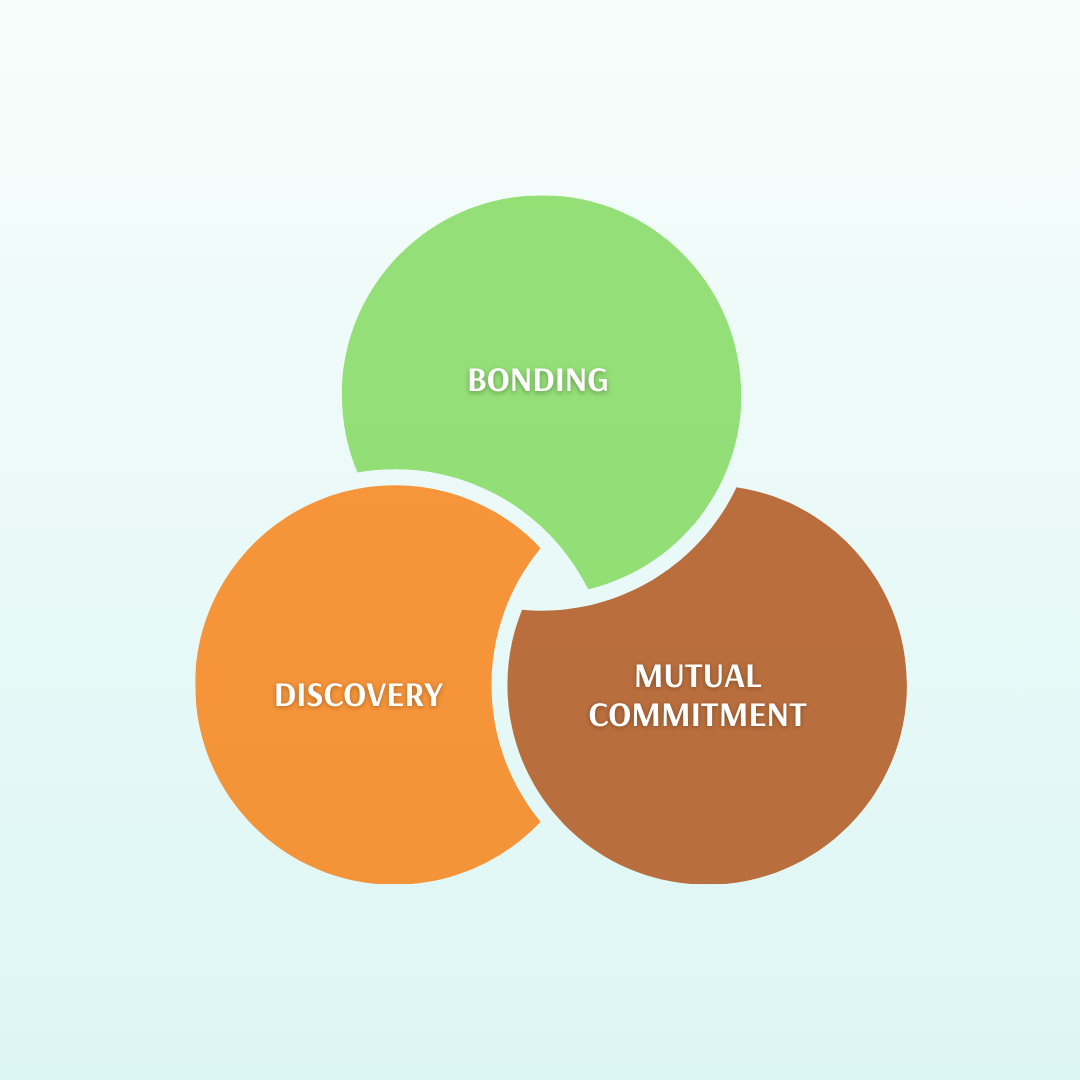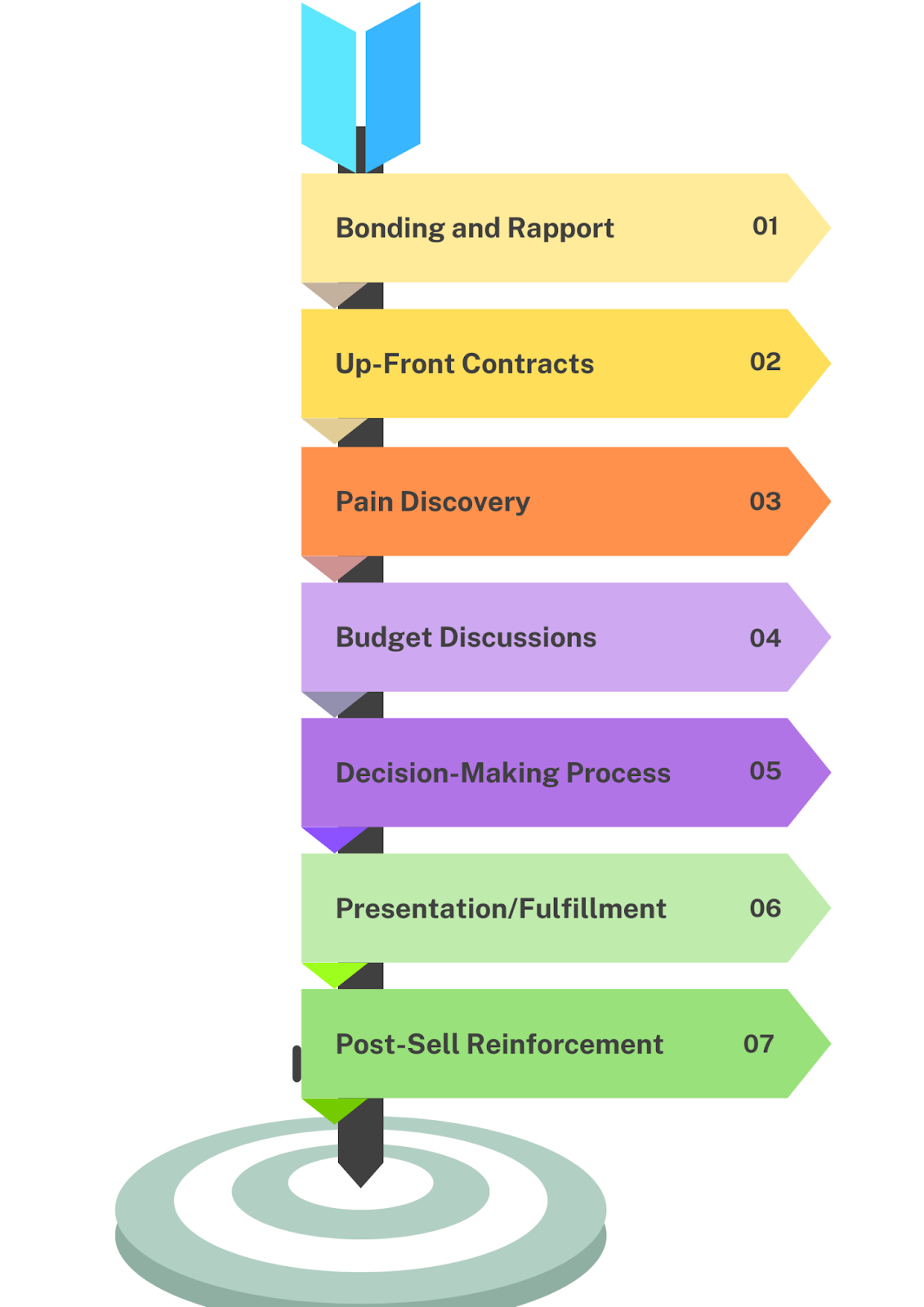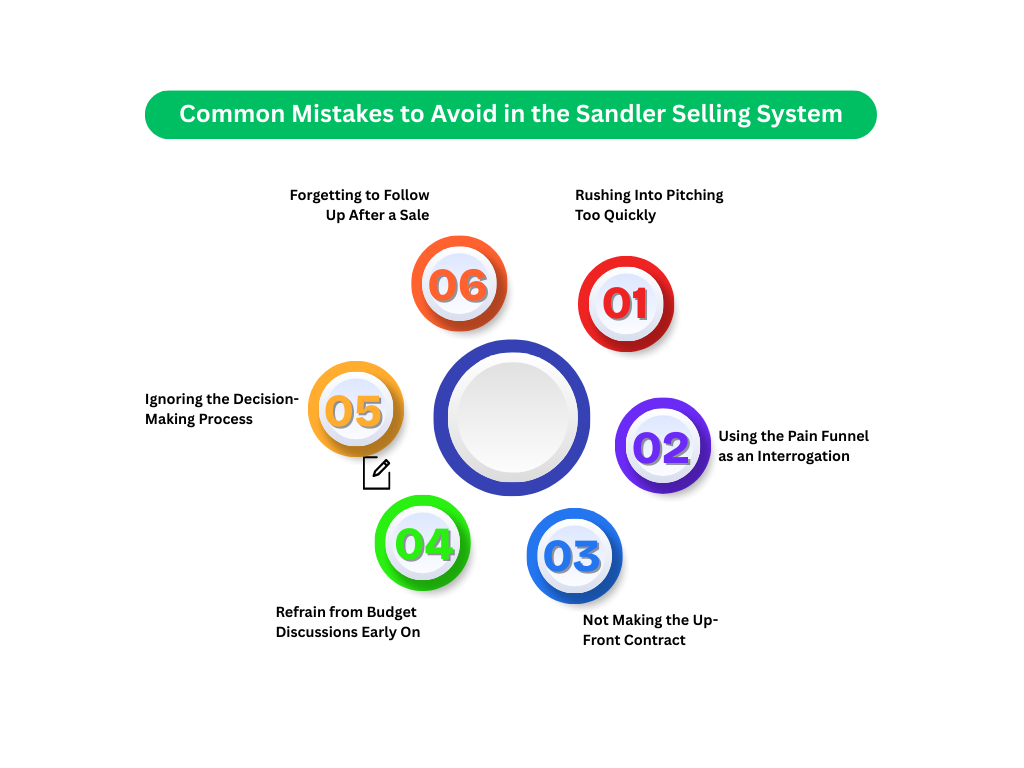With the changing face of sales today, where customers are educated and competition is at an all-time high, organizations require systematic processes that not only try to push product but also establish trust, recognize real issues, and deliver measurable outcomes. Such a system is the Sandler sales methodology.
Contrary to most effective sales approaches that depend on aggressive pitching, Sandler centers on strong customer relationship development, recognizing buyers' true pains, and matching solutions to existing needs.
So, if you are curious to learn about Sandler sales methodology and how it can be applied in present-day B2B sales, this blog will take you through its seven-step process, real-life benefits, and why it is one of the most powerful tools for predictable, sustainable growth.
What is the Sandler Sales Methodology?
The Sandler Selling System, developed by David Sandler in 1967, countered the popular "hard-sell" tactics at the time. Rather than treating sales as a one-way sale, it suggested buyer and seller must enter mutual agreement and discovery.
The model places the sales professionals in the trusted advisor, rather than pushy vendor, role. Rather than closing the sale as the only goal, Sandler concentrates on three main areas:

- Bonding: Creating real human relationships.
- Discovery: Identifying the customer's actual pains and buying process.
- Mutual Commitment: Getting a good fit for the solution and keeping the customer at ease to continue.
This psychology-based consultative approach continues to be applied today across industries SaaS and finance, through manufacturing and healthcare, because it yields predictable forecasting and stronger pipelines.
Why Sandler Is Relevant Today: The Numbers Behind It
Sales today is all about numbers, and the numbers tell us why Sandler continues to be the star:
- Quota Achievement: Sandler-trained teams achieve 50% greater quota achievement.
- Revenue Forecastability: Companies achieve fewer delayed deals and more reliable projections.
- Customer Renewal: Sandler's post-sell activities increase renewal.
- Efficiency Gains: Businesses such as Forterra save $30,000 per month in expenses after embracing Sandler's scientific pipeline (PPCExpo).
For the businesses that want predictability and precision in sales forecasts, Sandler has an approach that takes guesswork out of pipelines.
The Seven Steps of the Sandler Selling System
Sometimes called the Sandler Submarine, the process avoids skipping a step. Let us go through each stage in some detail:

1. Bonding and Rapport
Sales begin with trust. Instead of jumping into product talk, Sandler demands solid customer relationships founded on genuine conversation. This means paying close attention, mirroring communication styles, and creating a context in which prospects feel open to reveal problems.
Example: A SaaS sales representative might start by discussing the client's current workflows before their software.
2. Up-Front Contracts
An up-front contract is all about setting expectations. Both the prospect and salesperson agree on what is going to occur with the conversation, how long, and what the possibilities are. It dispels confusion and fosters respect for one another.
"See how Pepsales AI empowers sales reps to prepare with thoughtful meeting agendas based on the Sandler methodology."
3. Pain Discovery (The Pain Funnel)
This is the heart of Sandler. Reps apply the pain funnel through probing, multi-level, open-ended questions that dig through surface concerns. The goal is to determine the emotional, operational, and financial consequences of problems.
Questions move from broad to slightly more precise:
- "What are you battling with currently?"
- "How long have you been dealing with this problem?"
- "What effect is this having on your team/revenue/customers?"
Pain discovery-driven companies have higher close rates compared to non-pain discovery-driven companies.
4. Budget Conversations
Sandler never brings up budget as an objection in the final stage, but takes it back to the beginning. This puts the solution within reach and saves time on deals that are not going to go anywhere.
Example: "What resources have you implemented to solve this issue?"
5. Decision-Making Process
Each purchase decision is a process of several stakeholders, time intervals, and standards. Sandler instructs reps to document this so that no surprises are had down the line.
6. Presentation/Fulfillment
In contrast to all those outdated methods that sell first, Sandler presentations come only after pain, budget, and decision-making processes have been found. That way, solutions are customized, not universal.
7. Post-Sell Reinforcement
The sale is not the end. Sandler prioritizes follow-up after the sale to minimize buyer's remorse, validate the purchase decision, and establish trust for renewals and word-of-mouth referrals.
Advantages of the Sandler Sales Philosophy
The Sandler system is a value-add system for customers and sales organizations. Contrary to dogmatic, pitch-reliant sales techniques, it engenders a mutual partnership wherein both parties are empowered. Break down the advantages here:
Sales Team Benefits
1. Briefer Sales Cycle
By qualifying leads early on (by budget, pain, and decision process), Sandler avoids wasting time on inapt prospects. The salespeople instantly know if a lead is worth exploring, avoiding lengthy deal cycles.
For instance, a SaaS company that adopted Sandler reduced its average sales cycle from 120 days to 75 days, merely by adding pre-contract agreements and clear-cut qualification indicators.
2. Increased Deal Qualification Rates
Pain discovery (pain funnel) prevents reps from merely pursuing prospects but targets those with immediate needs, budget, and buying power. This generates higher win rates since reps are focused on actual issues instead of selling on features.
3. Enhanced Accuracy of Sales Forecasts
Because Sandler adheres to a specific seven-step process, sales managers can simply see where each deal is at all times. This makes the accuracy of revenue predictions much higher, so management can more accurately predict resources.
4. Greater Confidence and Skill Building
Sandler provides reps with conversation structures (such as the pain funnel and advance commitments) that remove stress and increase confidence. Reps are not experiencing that they are "selling," but rather advising more effectively and less stressed.
Customer Gains
1. Feeling Truly Understood
Customers grumble that salespeople don't listen. The Sandler approach turns this around by making the buyer do most of the talking. Through tiered questioning, prospects hear and feel heard, and this engenders trust.
2. Solutions Targeted to True Pains
Rather than a "one-size-fits-all" pitch, Sandler presentations are tailored to the pains uncovered earlier. Customers get solutions targeted to their priorities, budget, and processes.
3. Establishing Long-Term Trust With Advisors, Not Sellers
Because Sandler is based on equal business footing, customers perceive the rep as a partner, not someone in search of taking their money. This generates loyalty and repeat business, increasing customer lifetime value.
Common Mistakes to Avoid in the Sandler Selling System
Although the Sandler sales methodology works very well, salespeople are able to mess it up when they use it. Flaws weaken its efficacy and make conversation come across as strained instead of spontaneous. The major errors to eradicate are as follows:

1. Rushing Into Pitching Too Quickly
The majority of reps continue relying on the classical method and start selling their product without adequate bonding, pain discovery, and budgeting accurately. This damages trust and makes the conversation a generic sales pitch.
Example: A rep delivering software features within the first five minutes rather than unearthing the client's workflow pains will lose trust.
2. Using the Pain Funnel as an Interrogation
The pain process only works if it is conducted in an interview style. Others use the pain funnel in a literal sense, firing successive questions at the prospect. This will leave the customer defensive and uncooperative.
Tip: Counterbalance probing questions with empathy and active listening so prospects feel at ease.
3. Not Making the Up-Front Contract
One of Sandler's strongest tools is the pre-game contract, guaranteeing time, agenda, and result expectations. Reps who fail to do so ahead of time typically have muddled meetings where prospects never know what's next and squander conversations.
Tip: Always establish a mutual understanding at the beginning of calls.
4. Refrain from Budget Discussions Early On
Most reps do not like discussing money and push budget conversations to the end. In Sandler, this is a huge mistake because you could spend weeks working on creating a deal only to discover the customer has no budget.
Example: Not inquiring about the budget until the ultimate presentation can waste a rep weeks of work.
5. Ignoring the Decision-Making Process
Reps occasionally assume that the individual they're talking to is the sole decision-maker. In B2B, however, there is usually more than one. Skimming this step results in dead-ended deals when another influencer disapproves too late in the cycle.
6–10 average stakeholders are involved in B2B buying decisions, according to Gartner.
6. Forgetting to Follow Up After a Sale
Closing the sale is only the starting point. Non-follow-up salespeople expose themselves to buyer's remorse, cancellations, and lost business when it renews.
Tip: Always follow up after the sale to ensure commitment and build long-term relationship possibilities.
Final Thoughts
The Sandler Selling System is not a model for selling, it is a tested and proven methodology of establishing long-term customer relationships, revealing true needs through the pain discovery funnel, and producing repeatable sales results. By implementing its seven-step process, companies are able to change their culture of selling from transactional to consultative, and that creates long-term customer trust and loyalty.
But in the quick-paced market of the day, the use of Sandler skills alone is not sufficient. Contemporary sales organizations require AI-based solutions to scale insights, improve forecasting accuracy, and monitor buyer actions in real time. That is where Pepsales AI steps in.
Ready to Supercharge Sandler with Pepsales AI?
With Pepsales AI, you can:
- Eliminate guesswork in sales forecasting predictability
- Improve pain discovery through AI-powered conversation analysis
- Boost relationship-building through customized engagement insights
- Avoid common selling errors with data-backed recommendations
Transform Sandler's age-old approach into a future-proofed sales machine using Pepsales AI. Schedule a free demo





.avif)




.avif)
